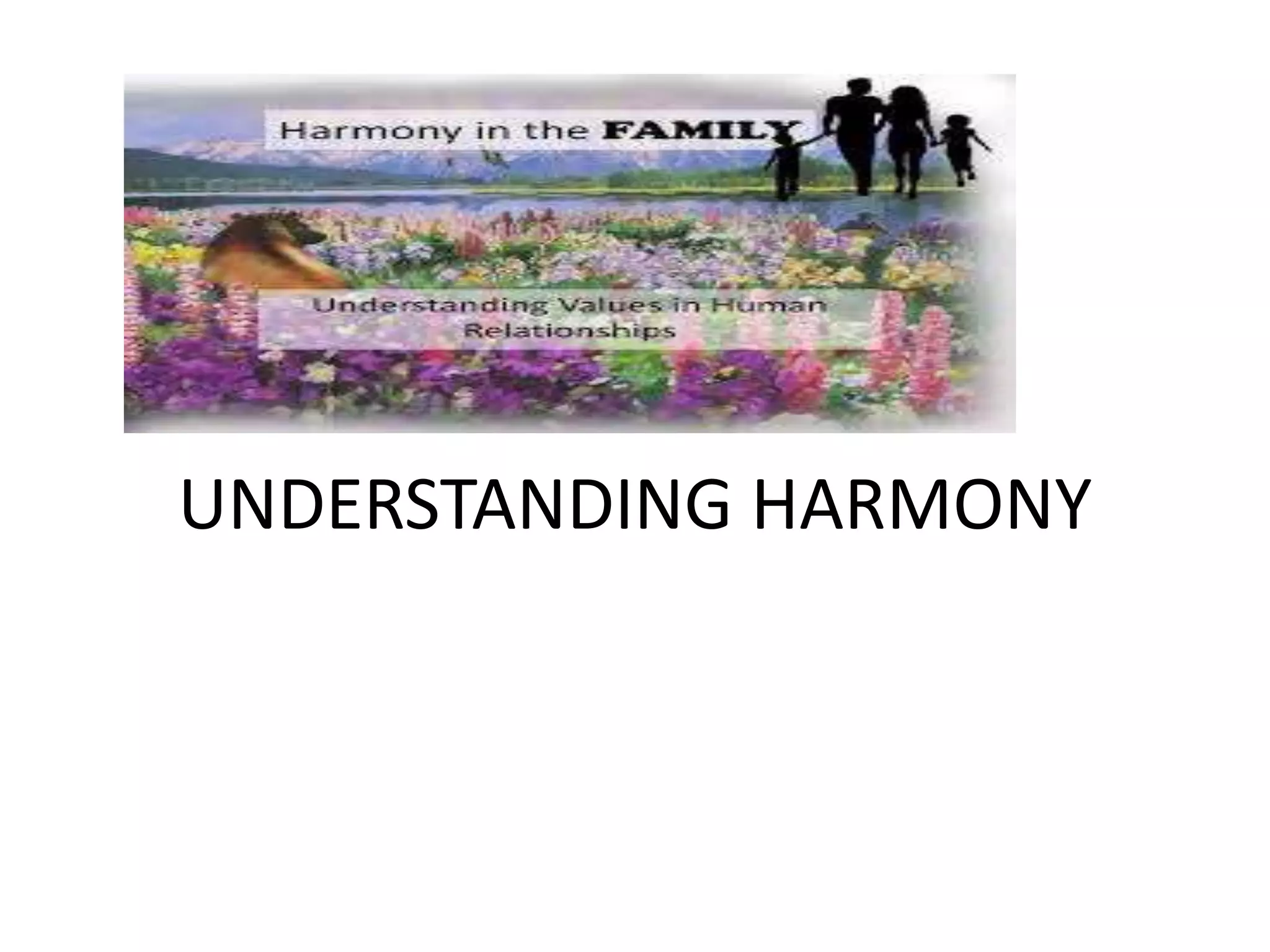The document discusses the concept of harmony in families. It defines family as a basic unit of interaction and natural laboratory for understanding harmony in relationships. It lists nine feelings - trust, respect, affection, care, guidance, reverence, glory, gratitude and love - that are important for harmony in relationships. These feelings can be recognized and fulfilling them leads to mutual happiness. The document also discusses differentiation and respect, the four orders in nature, and the natural characteristics of human beings.































































